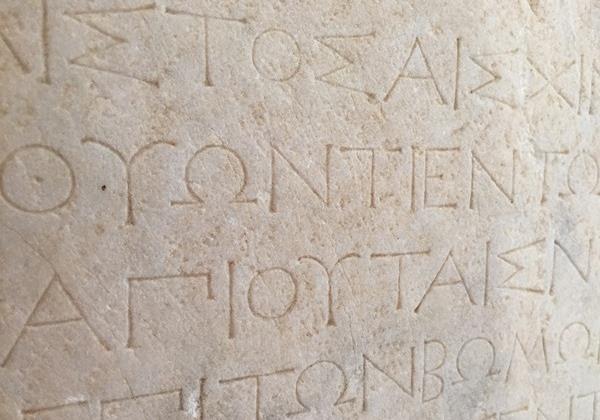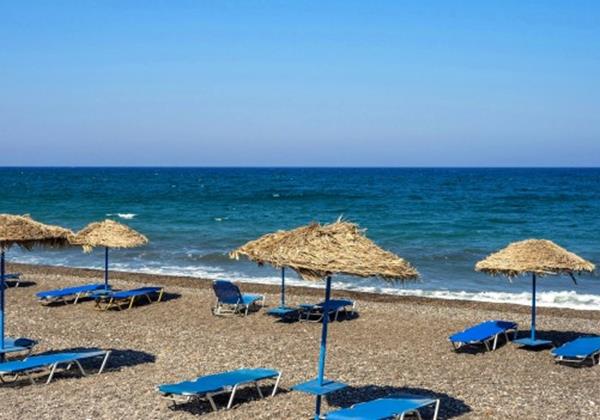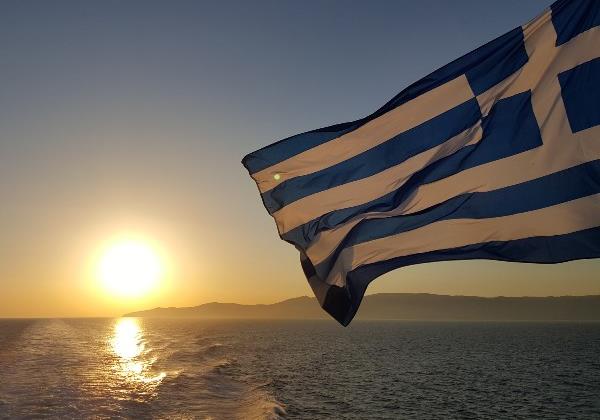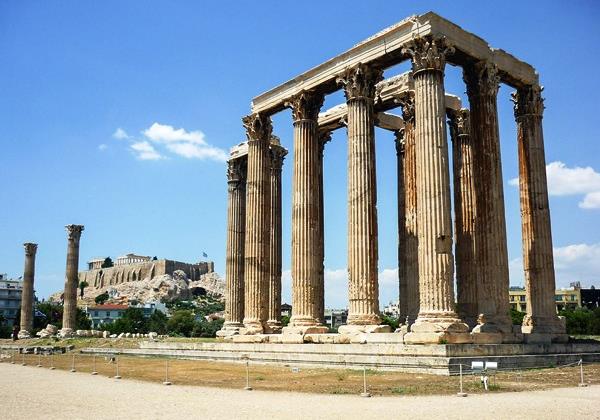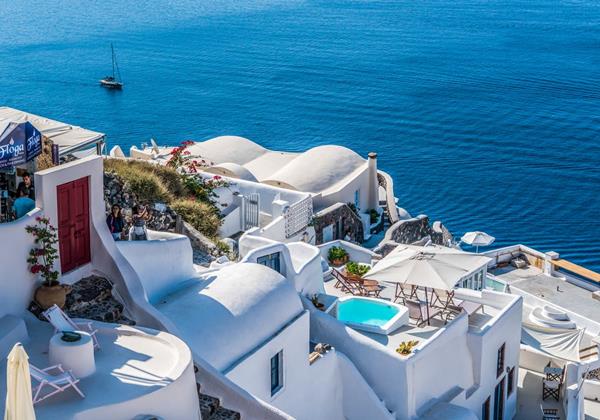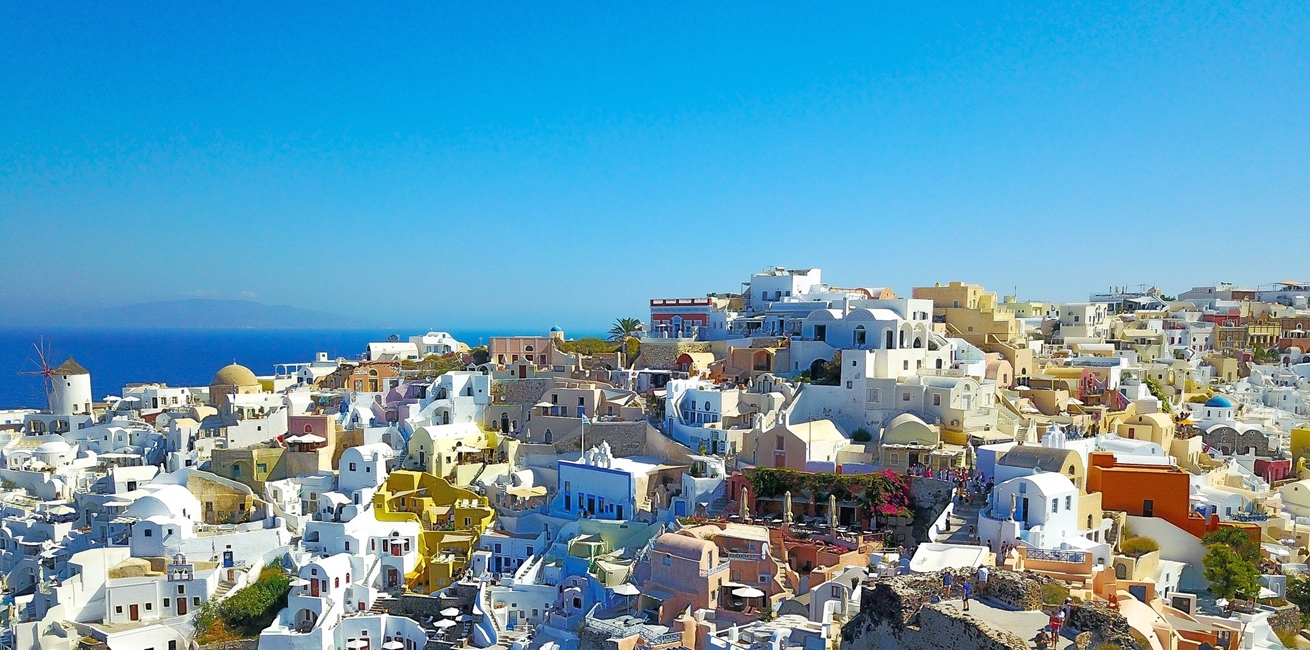
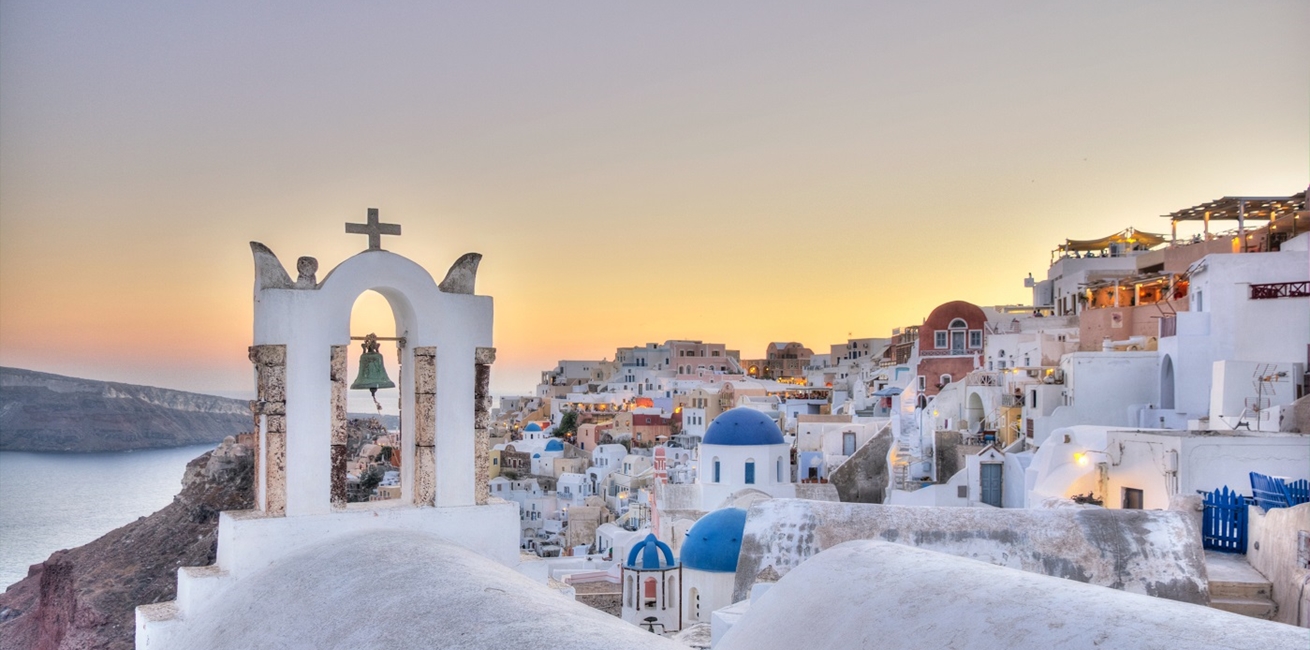
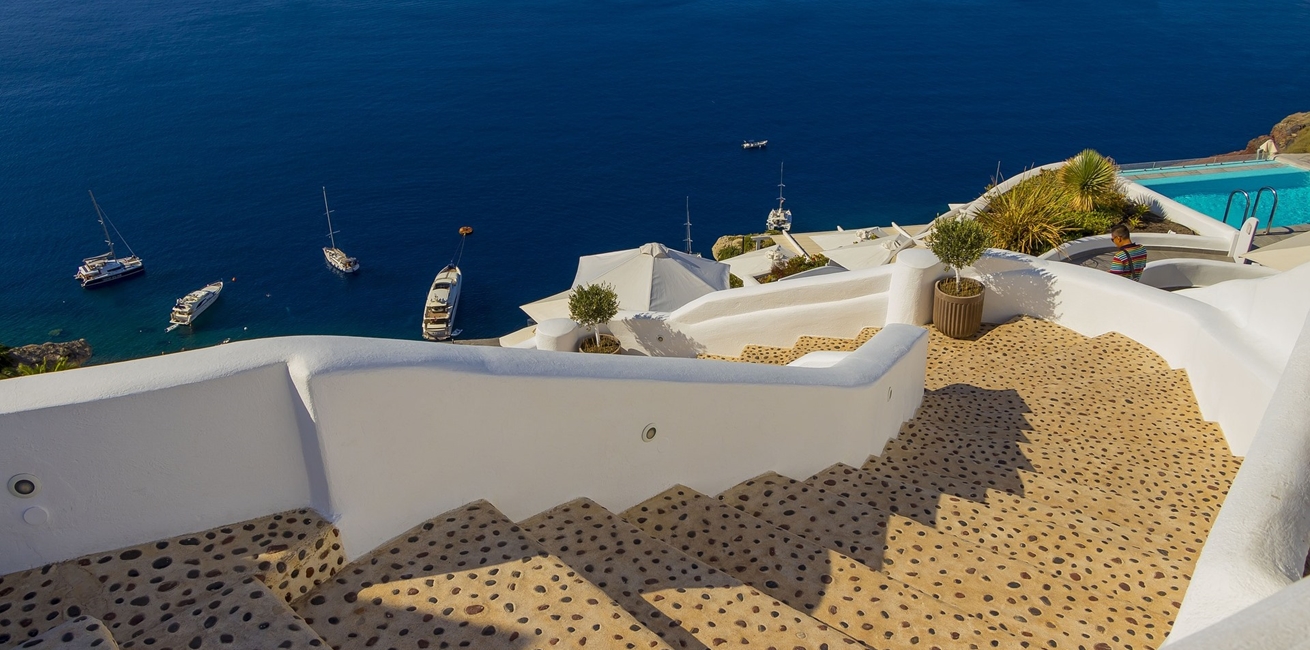
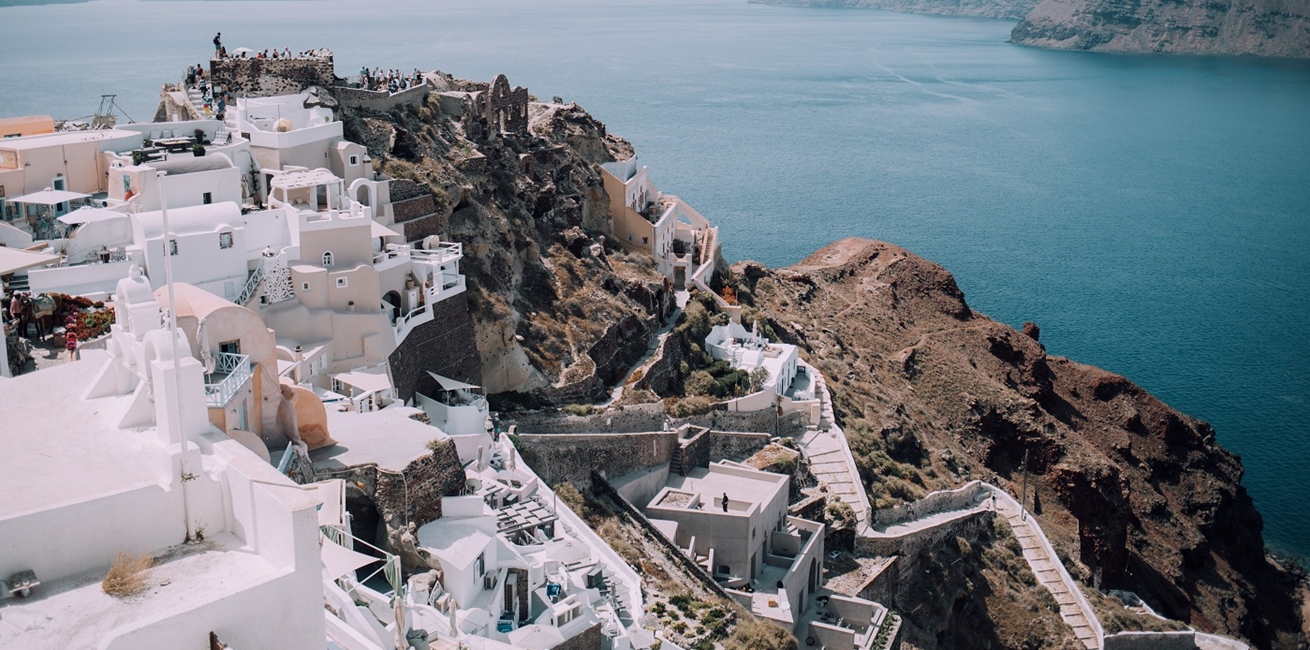
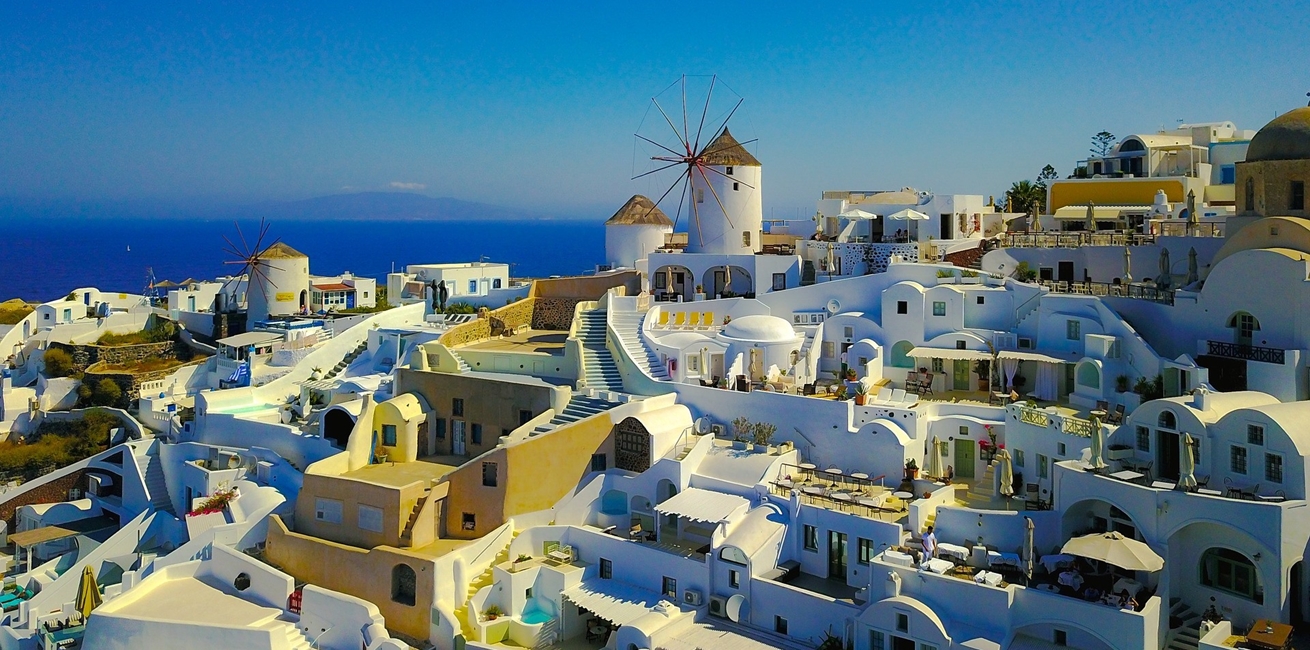
Discover Santorini
Find out more about what a Santorini holiday can offer
Santorini makes an enduring impression on visitors, and fires the imagination as to how one of the biggest volcanic eruptions in history shaped this spectacular island. Sheer cliffs soar from a sea drowned caldera to over 300 metres and are the location for some of the most incredible places to stay on holiday in the world.
Santorini is the largest island of a small, circular archipelago which bears the same name and is the remnant of a volcanic caldera. Located in the southern Aegean, it forms the southernmost member of the Cyclades group of islands and sits in the Aegean around 120 miles southeast of the Greek mainland at latitude of 36 degrees north.
The capital Thera and Oia to the north are favourite places to stay. Blue domed churches and white washed houses, so typical of architecture in the Cyclades cling to the caldera rim looking out over the Aegean, and contrast with the crystal clear blue skies to spectacular effect.
Santorini is a popular island, not just for its wonderful climate of long warm sunny days that stretch long into the autumn but for the wonderful places, at which to eat, drink, stay, discover and relax.
We offer a hand picked selection of what we consider are some of the best places to stay on the Island, and invite you to discover our Santorini collection.
Santorini's historical significance:
Devastated by a major catastrophic volcanic eruption in the 16th century BC; the 'Minoan eruption' was one of the largest volcanic events on Earth in recorded history. Exploding with the energy of several hundred atomic bombs in a fraction of a second, the volcano may have contributed to the collapse of the ancient Minoan civilization.
The eruption devastated the island of 'Thera' (Santorini) including the thriving ancient Minoan settlement at Akrotiri, which was extraordinarily preserved after being buried under a layer of volcanic ash. The stunning ruins of Akrotiri now stand in testament of the sophisticated urban settlement which once existed there and it is the most important prehistoric settlement found anywhere in the Eastern Mediterranean. The buildings are not only multi-storey; many of them contain vivid frescoes of religious processions, exotic animals, flowers and everyday life in Akrotiri. This excellent state of preservation has drawn parallels with another famously volcanically preserved site, earning it the moniker of the "Minoan Pompeii".
The volcanic dust also preserved negatives of disintegrated wooden objects such as furniture, allowing archaeologists to produce replicas of these objects by pouring Plaster of Paris into the hollows left behind. One difference between Akrotiri and Pompeii is that there were no uninterred bodies found in Akrotiri, suggesting the inhabitants were perhaps more fortunate than those of Pompeii and were evacuated before the volcanic dust reached the site.
Another popular theory holds that Santorini
is largely suspected to be actual lost utopian city first
mentioned by Plato, an Ancient Greek philosopher, in
the legend of the lost city
of Atlantis.
Santorini today is essentially what remains after the volcanic eruption created the current geological caldera (crater). The Santorini caldera is a large, mostly submerged central, rectangular lagoon, which measures about 12x7 km and is surrounded by 300 m high steep cliffs on three sides which shape the rugged landscape.


